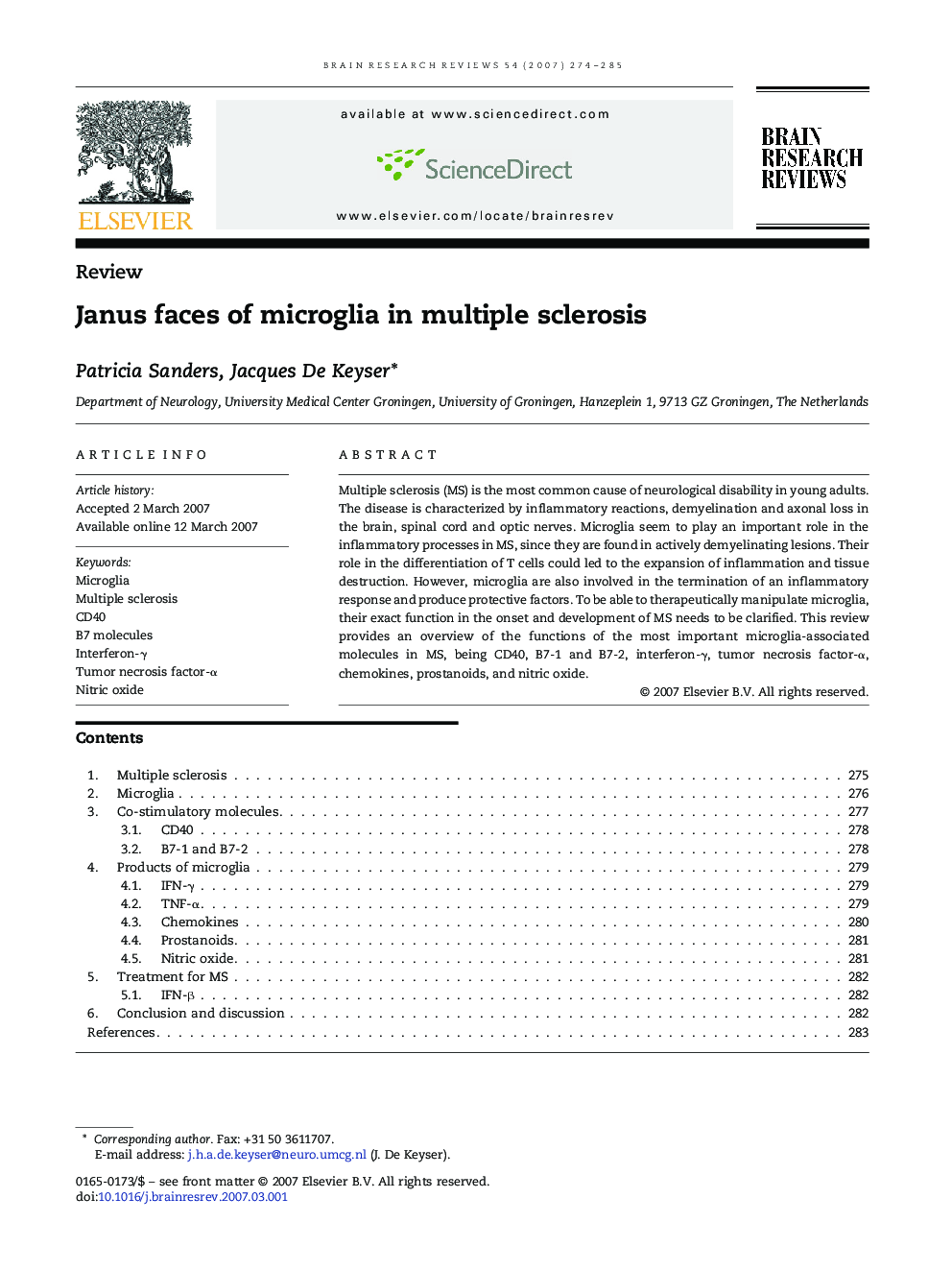| Article ID | Journal | Published Year | Pages | File Type |
|---|---|---|---|---|
| 4334079 | Brain Research Reviews | 2007 | 12 Pages |
Multiple sclerosis (MS) is the most common cause of neurological disability in young adults. The disease is characterized by inflammatory reactions, demyelination and axonal loss in the brain, spinal cord and optic nerves. Microglia seem to play an important role in the inflammatory processes in MS, since they are found in actively demyelinating lesions. Their role in the differentiation of T cells could led to the expansion of inflammation and tissue destruction. However, microglia are also involved in the termination of an inflammatory response and produce protective factors. To be able to therapeutically manipulate microglia, their exact function in the onset and development of MS needs to be clarified. This review provides an overview of the functions of the most important microglia-associated molecules in MS, being CD40, B7-1 and B7-2, interferon-γ, tumor necrosis factor-α, chemokines, prostanoids, and nitric oxide.
